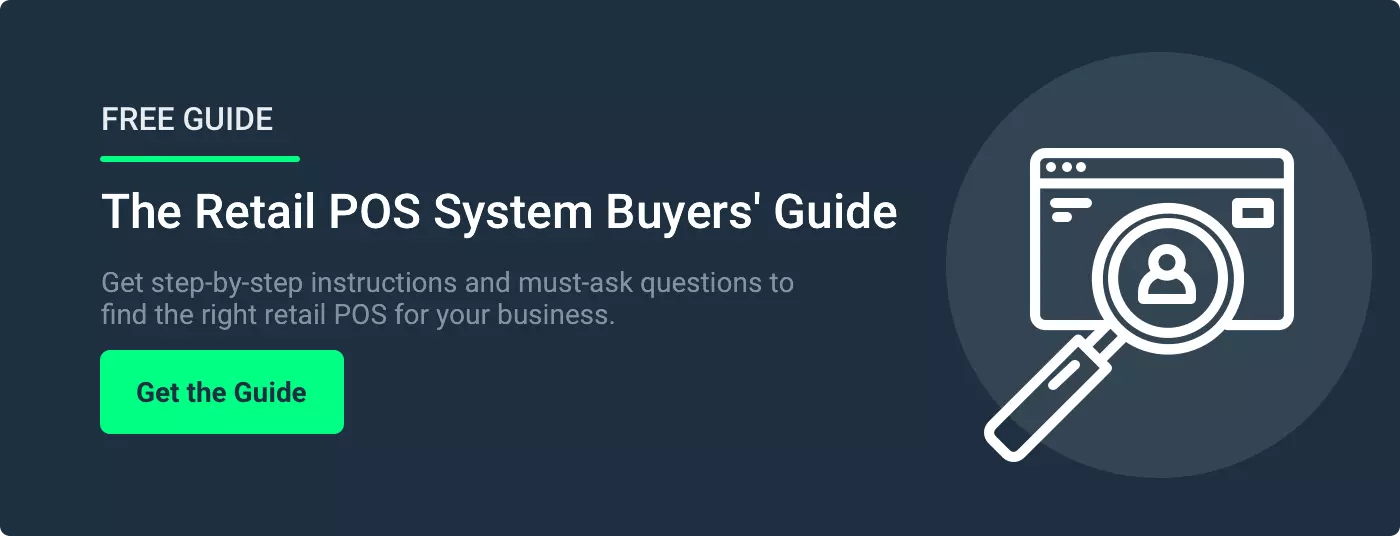Creating a daily sales report is an essential task for new and existing business owners.
Without one, it can be challenging to visualize and goals based on current sales. According to recent reports, almost half of all businesses are underperforming due to unstructured sales processes. This incoming data underlines the importance of creating a comprehensive daily sales report purpose-built to shape and guide the financial future of your growing small business.
POS Nation’s powerful POS solution uses sales data to streamline daily operations. As an industry-leading POS system provider, we’ve seen first-hand how small business owners leverage data to achieve incredible business outcomes. And we’re ready to help you and your business do the same!
Refer to these five steps below for a simplified but thorough breakdown of how to create an effective daily sales report that will steer your business in the right direction.
5 Steps for Creating an Effective Daily Sales Report
A daily sales report helps business owners and managers visualize and track profits, progress, and growth. Typically, daily sales reports include a breakdown of items sold, time of purchase, and the name of the associate responsible for the sale.
With this information, owners and managers can quickly identify popular items and tailor sales processes or adjust inventory to create increased purchases. There should be separate columns for each item sold for a price, discounts applied, and quantity sold for each item sold. In addition, we recommend including a breakdown of net versus gross profits, as well as the total tax amount for all items. Finally, incorporate any returns or refunds made during the day.
Once you have the proper structure in place, follow these step-by-step procedures to build and manage an effective daily sales report for your growing business.
1. Identify the Purpose of Your Daily Sales Report
Which key data should you focus on and why? A daily sales report is a tool used to extract and monitor the most relevant daily sales data. Focus only on the sales information that helps you track toward your sales goals.
First, identify your sales goals. Include a breakdown of daily, monthly, quarterly, and yearly targets. Use the daily sales report to quickly and accurately monitor daily sales activities and benchmark data against broader sales goals.
Make sure to focus on process metrics (progress made towards sales goals) as much as you focus on outcome metrics (actual sales closed). Both are important for hitting sales-related key performance indicators (KPIs) and reaching monthly, quarterly, and annual goals.
2. Keep Your Audience in Mind
Who is reading your daily sales report? ? Should you include information for all employees, just the sales and marketing teams, or upper management? Consider tailoring your daily sales report based on your audience. For example, upper management will likely require concrete data related to annual projections. In comparison, employees typically only require information related to product type, quantity sold, etc.
Creating a daily sales report that is useful for all audience types takes practice. You can “beta test” draft reports with team members to see how easy or difficult it is to process information from your document.
3. Gather and Organize the Data
Sales analysis involves evaluating the performance of your business against its goals. A daily sales report should include information about the top-performing and underperforming products/services, selling and marketing opportunities or issues, and cover any issues that have materially affected the business.
Once you have a clear picture of the purpose of your sales report and who will read it, collect, filter, and analyze the data needed. Take advantage of tools expressly designed for analyzing daily sales report data. In addition to standard sales and inventory management tracking, POS Nation makes it simple and easy to run reports on virtually every aspect of your business, including daily sales, year-over-year analysis, and more.
4. Take Advantage of Data Visualization Tools
Sometimes it can be more difficult to clearly visualize sales goals from pure data. Data visualization enhances data processing and organizational efficiency.
Utilizing charts, graphs, tools, or software to paint a clear picture of daily sales trends effectively makes sales data more actionable and accessible.
Use templates or a comprehensive sales software program to shoulder some of the work when building the report’s actual layout. This option saves time and creates an easily repeatable daily process.
5. Give Your Audience Context for the Data
As with any business report, it’s important to contextualize the information. Upper management or executives may appreciate a summary of the report that hits the highlights and brings everything into clarity quickly.
Make it clear what the numbers are, what’s going well, what’s not working, and what can be done about it. Contextual sales data brings clarity to daily sales reports and streamlines the implementation of any changes that may be necessary after review.
Using POS Systems to Your Advantage
Now that you have a better understanding of the steps for building an effective daily sales report, it’s time to take the next step and incorporate a world-class point of sale (POS) software system into your daily sales process.
While there are certain advantages to using a basic POS software option, there are even better reasons to use a POS software solution that’s custom-built for your business.
At POS Nation, we’ve designed a complete POS solution that improves checkouts, creates happier customers, and grows your business. Your business also gets powerful customer support for our software with zero hidden fees and no long-term contracts. Simply put, no one is doing it like we are. Our desire to improve and expand our customer’s businesses is the reason we rank so highly in industry reviews.
Not convinced yet and want to compare your options first? No problem. Take a look at our free guide: the comprehensive buyers’ guide we put together for business owners like yourself to help visually compare how POS software options stack against each other.

